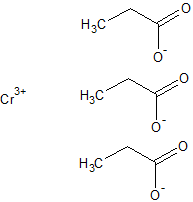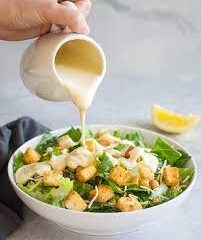Does Chromium in Feed Help IR Horses?

There art 9 million domestic horses in the United States and the competition for the many dollars available to support those animals is fierce. There are hundreds if not thousands of feed companies all competing for those dollars and it is a challenge to compete with the two largest kids on the block so creative marketing is an effective and legitimate tool in tapping into that pool. Marketing relies on telling the truth but leaving out some significant details in hopes that consumers don’t peel the onion past the first layer.
Let’s have the lesson.
The chromium study in question was written in December of 2019 and published in March 2020 so it’s very current data. It is a thorough and legitimate study conducted by University of North Carolina which is a fine school with great credentials.
I will paste the conclusions section of this study in it’s entirety for your consideration but before that let me summarize some of the important points.
The study was commissioned and paid for by Kemin Agri Foods North America who is coincidentally a large supplier of food grade chromium and KEMTech is the source of the chromium propinate in the feed.
Of the 10 scientists conducting and authoring the study three were on the Kemin payroll and one was a paid consultant at the time the study was conducted.
None of this is unusual, Purina research is done primarily in house and most of their scientists are on the payroll but we should disclose everything and everything was disclosed in the conflict of interest statement on the study. Legit all the way.
Here is the conclusion.
“Horses supplemented with 4 mg Cr/d had lower plasma glucose concentrations and glucose AUC than control horses following concentrate feeding. Serum insulin concentrations were lower in horses fed 2 or 4 mg Cr/d compared with controls at 4 h after concentrate feeding. The lower plasma glucose response, coupled with reduced serum insulin concentrations following concentrate feeding in horses supplemented with 4 mg Cr/d, is consistent with Cr enhancing insulin sensitivity. The 4 mg Cr/d treatment would be equivalent to 0.36 mg Cr/kg of diet. “
That’s the entire unedited enchilada.
Marketing will tell you that the study shows chromium increases insulin sensitivity. There’s chromium in the feed. Therefore the feed increases insulin sensitivity. Ta da!
The first two statements are absolutely, undeniably true. What about the important one? Will this feed really help my IR heart horse? Grab your hankies because we’re peeling back the onion.
One more disclaimer. I have no clinical background I’ve just been dealing with statistics and marketing departments for 40 years so I know how to be an inquisitive pain in the ass.
The study was thorough. It was conducted on 48 HEALTHY AQH horses between the ages of 3 and 8. Most EMS and PPID horses don’t present until age 12 to 13. Does it make a difference?
The average body condition score was 4.27 so they were healthy, young AND svelte horses. Most but not all EMS horses are obese or have a high level of adipose fat concentrations. Does this make a difference?
I have no clinical background but I do have a great deal of hands on experience and personal learning about metabolic horses and I can tell you without a doubt that two significant contributory factors to the condition are age and body condition.
How about those healthy horses? Is there any benefit to increased insulin sensitivity in healthy horses? If they’re healthy why mess with it?
This opinion is from a layperson who hasn’t had a single credit in organic chemistry and 3 credits in biology but it is that if you’re going to ask me to use a product to treat my middle aged overweight horse you should show me a clinical trial of efficacy on middle aged overweight horses. But I have no letters after my name so…
This IS a professional opinion from a feed specialist. Feed should be used to feed the horse. It should deliver the essential nutrition to meet the energy requirements of age, condition and workload.
Any supplements a horse may require to enhance quality of life, manage a condition or enhance performance should be administered in the dosage appropriate for the results desired.
I typically use joint supplement as an example because it’s an obvious one. If you have a four year old OTTB in heavy training she may get 7 pounds of feed per day while your 24 year old AQH may only get 4 pounds. Who needs joint supplement more? Who is getting more joint supplement?
This study is an even better example. We can see from the conclusion that 2 or 4 mg of chromium per day yielded the best results with 4 mg being optimum. By the way, did I mention that the average increase in insulin sensitivity was less than 9%?
According to the nutritionist who worked on this feed the infusion rate (how much chromium is in the feed) is 1mg per pound.
Again, I’m a lay dummy so if I need correction…
The minimum feed rate of the feed is 3 pounds per day for a 1,000 pound horse. That delivers 3 mg chromium. Not optimal. If I feed 8 pounds per day that 8 mg chromium is also not optimal. According to the study the feed company is hanging their hats on unless I feed exactly 4 pounds per day my horse isn’t getting the optimal dosage of chromium.
Well, some is better than none. Right? Not according to the study. Efficacy drops off above or below the 4 mg dosage. What if 8 mg is too much? Am I pushing the tolerable limit? (In this case it’s 3,000 mg per day according to the NRC so no but it’s easy to crate a mineral imbalance in a horse).
The Most Important Takeaway Is
Read this twice because it’s worth repeating…
Even if chromium propionate provides enhanced insulin sensitivity in horses (and the jury is far from settled) the feed itself has never been tested for efficacy on live horses. Again, there is no clinical evidence that this particular feed will have any impact at all on a horse when fed according to recommendations.
Many of the premium feeds and supplements from Purina and Cargill have been clinically researched on live horses to ensure performance and efficacy.
I have said this to at least a hundred different customers. If you’re buying a feed because your horse is thriving on it, they look good, they feel good, the vet stays away then please by all means keep feeding it.
If you’re buying a feed because it has chromium in it or probiotics or MSM or any other supplement save your money because it is very difficult to match required feed rate, infusion rate and dosage for specific supplements.
Marketing will tell you that having supplements in the feed will save you time and money. I will tell you that in my opinion it’s marketing, not feed advice.
Here’s my conclusion. Making claims of efficacy without clinical research to support it is dangerous. Making claims of efficacy that are supported by research but imply extended efficacy are really dangerous.
Do your homework. Look past the label. Marketing departments are counting on you not to look past the fancy citations and just accept them at face value.
I’m not being paid for these opinions, I’m not being paid by a feed company. My only agenda is to help you navigate the choppy waters of commercial feeds to make your lives easier because if you own a horse God know you need all the help you can get.
Here’s the link to the study so you can decide for yourselves.



